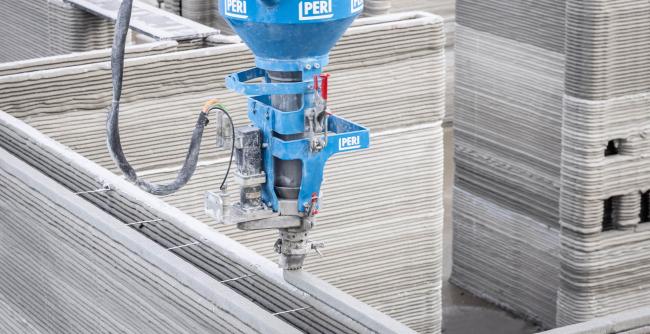Rentvesting to Own a Home
For the younger generation who dreams of owning a home, the Australian property market presents significant challenges – rising house prices, mortgage interest rates, and limited supply in major cities. In response, many people are embracing a strategy called ‘rentvesting, where you buy an investment property in a place you can afford while choosing to rent in a location you may not necessarily afford. Rentvesting allows you to enjoy living in sought-after areas while investing in less expensive suburbs where you can build capital and generate rental income. Is rentvesting an effective strategy for holding a property? Let’s discuss how it works, the potential benefits and drawbacks of rentvesting, and if it is a viable way to climb the property ladder. What is rentvesting? Rentvesting refers to renting a property to live in while simultaneously investing in real estate, typically to build wealth or enter the property market. Rentvestors choose to rent in areas where they prefer to live while purchasing an investment property in a more affordable or high-growth location. Because metro locations or affluent suburbs are the most in-demand areas, rent would be cheaper than making mortgage repayments. And Australians are deciding to rent in these areas than fail to experience residing here because of high house prices. This strategy allows you to still rent in an area where you may be unable to buy a home due to financial constraints. At the same time, you can hold a property in a location you can afford. How does rentvesting work? Let’s consider an example: Sarah is a single professional working in Sydney, where property prices are high. She enjoys the lifestyle and convenience of living but finds it impossible to afford a property in her desired area, Milsons Point, where house prices start at $1 million. Sarah rents a studio apartment in Milsons Point for $2,400 per month. At this time, she has already saved $60,000 for a deposit at an affordable property in a regional area with good growth potential. Sarah was able to purchase an investment property for $300,000, with a 20% deposit. She takes out an investment loan for the remaining $240,000 at an interest rate of 4.5% per annum for a 30-year term. Sarah rents out the investment property, and after maintenance, council rates, insurance, and other expenses, she can earn a net rental income of $18,000 per year from a $400/month rent. Sarah needs to calculate the shortfall between rental income and mortgage payments to cover the mortgage repayments on the investment property. Since the loan is at approximately $1,622/month, or $19,464/year. There is a shortfall of $1,464/year for the investment property. Sarah must budget for this shortfall and ensure sufficient cash flow to cover it (or negatively gear the property). But as time passes, she hopes to build equity from the investment and buy her apartment in a preferred Sydney location. What are the pros of rentvesting? Affordability – Rentvesting allows individuals to enter the property market sooner by purchasing an investment property in a more affordable location while renting in their desired area. This approach can be a practical solution for those unable to afford to buy in their preferred location. Lifestyle flexibility – Rentvesting allows individuals to choose their preferred rental location based on factors such as proximity to work, amenities, and lifestyle preferences. It allows them to live in desirable areas without compromising their housing preferences. Investment property perks – By investing in property, rentvestors have the potential to build wealth through capital growth and rental income. Over time, rental income can contribute towards the mortgage payments on the investment property while the property itself may appreciate. Tax advantages – Rentvestors can leverage tax benefits associated with owning an investment property, such as claiming deductions for property-related expenses, depreciation, and interest payments. For instance, if the property is negatively geared, you can leverage losses against other incomes taxed at top marginal rates. These tax advantages can help offset costs while your property increases in value. What are rentvesting drawbacks? While rentvesting can offer benefits, there are also potential disadvantages: Uncertainty in rental income – Rentvesting relies on consistent rental income to cover mortgage repayments. However, there is a risk of vacancies or difficulties finding reliable tenants. Extended vacancy periods can lead to financial strain if the rental income is disrupted. Dual financial responsibilities – This tactic brings a huge financial obligation to rent and own an investment property. You must manage rental payments and associated expenses for the current rental property while juggling mortgage repayments, property maintenance, and other costs related to the investment property. Renting your dwelling – Renting means you have limited control. You have to adhere to the landlord’s rules and restrictions, limiting their ability to make modifications or personalize their home according to their preferences. You might even be forced to move out if the landlord decides to sell or suddenly increases the rent fee. Capital gains tax – Owning an investment property means you must pay capital gains tax when you sell. This is an added cost that an owner-occupier property does not have. Limited first home buyer benefits – By opting for rentvesting, individuals may not be eligible for certain first homebuyer benefits or government incentives (FHOG, FHGS) typically offered to owner-occupiers. These benefits include grants, stamp duty exemptions, or access to special loan products. Fluctuating housing value – The main goal of owning an investment property is to build capital growth through its value. But this doesn’t always happen; there’s always the possibility that the property declines in value, and you end up at a loss. Talk to us about rentvesting Rentvesting offers an alternative approach for Australians who want to enter the housing market but can’t afford it in their chosen suburb. It can balance your goal of owning a home and building wealth while maintaining a certain quality of life in a high-demand location. Of course, the main consideration here is that success will depend on your investment property’s value. You could seek out real estate professionals’ insights to determine if rentvesting could be better for you than going straight to owner-occupying a home.Rentvesting can be a viable pathway to homeownership and wealth creation for Australians willing to explore alternative strategies in the dynamic property market. Talk to us about your options today. Darin Hindmarsh See Full Bio

